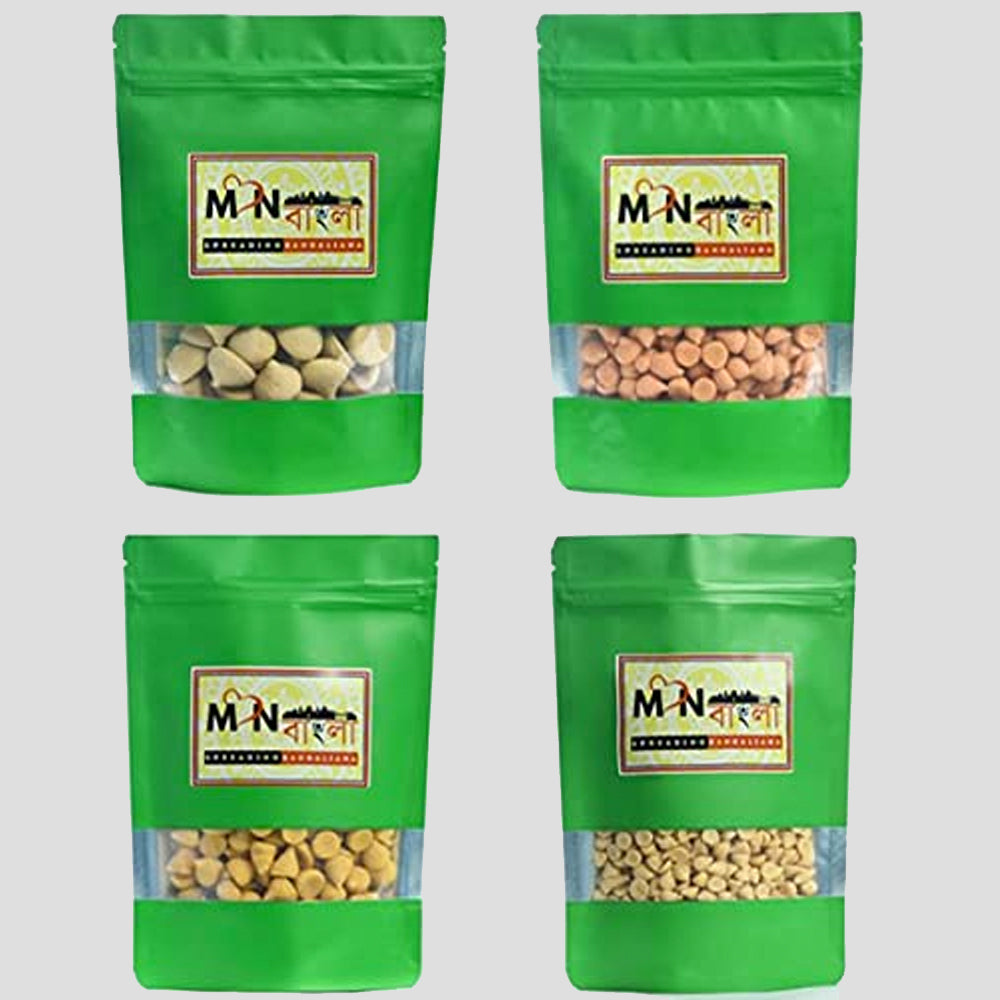The palm jaggery also known as patali gur, nolen gur and jhola gur in Bengal. The history of art of making patali gur dates back to ancient time, perhaps the art of collecting and making of the jaggery was discovered by ancient settlers of Bengal. Traditionally Nolen gur was used as a aromatic sweetener in preparing sweet dishes before the popularity of refined sugar in Bengal. The jaggery not only provides a distinct smell but also gives variation of rustic brown colour in the sweets. The process of making palm jaggery has been passed down to generations in many parts of the country. However, the process of jaggery making from collecting the liquid to final product is a very time consuming and labour intensive. This rustic brown and golden colour jaggery has been integral part of Bengalis’s cuisine for thousands of years. Traditionally jhola gur or patali gur are used for preparation of winter dishes in the kitchen’s of Bengal. The gur also has health benefits such as increasing immunity, hemoglobin and providing essential minerals in human body.
The traditional method of collecting the sweet nectar
Collecting the sap
The farmers and artisans eagerly wait for the autumn season to collect sweet sap from the palm tree. The local artisans also known as shiuli and gachia in Bengal carry out this task, they are small farmers or landless labours who undertook this task for extra income. To collect the sap, they make a small cut in the flower bud and fix a pipe to the cut and allow it to drip into an earthen pot. This is done in the early morning or late morning when the flow of sap is best by skilled local artisan who has the expert knowledge about the time and place to get most of the sap from the palm tree. However, most of the time, it is collected at night to prevent the sap to be fermented.
Storing and transporting sap
After the collection, the sap is to be immediately stored and transported as this sap is perishable. In some cases these sap are consumed as it is but most of the time they are made into jaggery.
Boiling of the sap
The art of boiling the sap of palm trees requires patience and time as it is a delicate process which is important to make palm jaggery.
The process of making palm jaggery
- The process of boiling the sap is a time consuming and requires a great patience and lots of hard work as the sap is very watery. The process requires careful attention for the sap to be concentrated without burning as it will taste bitter and quality will be low.
- Preparing the setup for boiling the sap; traditionally large pans made of iron or copper are used to boil the watery sap. These metals allow the heat to be distributed evenly that enhances the flavor of the jaggery in the making. The desired fuel that requires for heating and boiling of the sap is wooden fire that gives a slow and even heat to boil the sap.
- The boiling of the sap requires a slow process with continuous stirring with a preferably wooden ladle to prevent the sap from getting stick with the bottom of the vessels. The temperature is being controlled and continuous stirring ensures to prevent caramelisation that can lead to bitterness or burning. As the process goes on, it is important to remove foam or any scum to give the final product a cleaner and enhanced flavor.
- After the syrup has reached to the desired consistency, it changes its colour to light yellow to brown colour. After sometime, it is immediately removed from the fire and poured into moulds. Once it is cooled down, the solidified jaggery is removed from the moulds and ready to be consumed or sold in the markets.
The decline and rejuvenation of the art of nolen gur or palm jaggery
The popularity of jaggery making from the sap of palm trees has seen its decline in the past few decades due to the popularity of using refined sugar in kitchens. The art of jaggery making has also declined due to climate change it has changed the flowering cycle of palm trees. The efforts have been made to revive the art by raising awareness about benefits of consuming jaggery. With the help of promoting the health benefits of consuming jaggery, it is now slowly getting popularity in India and abroad. The consumption of jaggery has been considered healthy as it contains essential minerals and the growing demand for natural sweeter has also been on rise among health-conscious people.

The art of making jaggery has been slowly reviving with the help of food bloggers and chefs to experiment with jaggery in preparing food items. The revival of the art not only promotes a healthy lifestyle but also helps rural communities by providing them with an extra source of income.
Conclusion
The art of jaggery-making is one of the traditional and cultural identities of Bengal. The process shows a deep connection with the agrarian economy and the skills of local artisans. The patali gur making also demonstrates the patience level that the small farmers and local artisans has in preparing the gur. The art has faced competition from refined sugar, and challenges due to climate change and deforestation, still the art has not died. It was kept alive in the rural community in Bengal. The efforts have been made to revive the almost-dying profession by spreading awareness. The gur are also been made available through online shopping store for those health and cooking enthusiasts who are in search to adopt to healthy eating through traditional and authentic food items. The palm jaggery/patali gur is now available at MonBangla for those people who want to taste the authentic flavor of nolen gur and want to recreate authentic winter Bengali items in their kitchen. By purchasing from local farmers, we can extent our support to the rural economy to thrive in this global competition.



